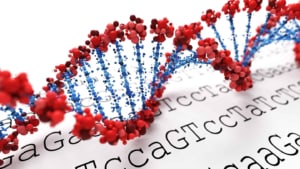At the Institute for the Advancement of Food and Nutrition Sciences research serves as the foundation for our actions. See our current grant opportunities below.
Current Opportunities:

Scientific integrity is a core value of IAFNS. Learn how we embed scientific integrity into every step of our research process.
Projects Funded by IAFNS:
IAFNS's mission is to advance food safety and nutrition science for the benefit of public health. View projects funded by IAFNS below, and learn how we embed scientific integrity into every step of our research process.
Key Findings and Implications of a Recent Systematic Review of the Potential Adverse Effects of Caffeine Consumption in Healthy Adults, Pregnant Women, Adolescents, and Children
Scientific findings lose their value if they cannot be easily translated for comprehension by diverse audiences. The Institute of Medicine (IOM) also recognizes this fact, and their guidance related to systematic reviews suggests that plain language summaries can improve the work’s usability for general audiences (IOM, 2009). Thus, the aim of this paper is to […]
Investigating the Potential Risk of Untargeted Iron Supplementation Among Cambodian Women
There is a lack of evidence on the safety of untargeted daily iron supplementation in women, especially in countries such as Cambodia, where both anemia and genetic hemoglobinopathies are common. Our aim is to assess biomarkers of potential adverse outcomes in Cambodian women who received daily oral iron supplements in accordance with the recent 2016 […]
Blood Fatty Acid Fingerprint to Predict Risk for Total Mortality
Circulating levels of blood fatty acids are being used to stratify patients into risk categories with regard to the development of chronic disease and death. The fatty acids most clearly associated with reduced risk for cardiovascular disease (CDV) and for death from any cause are the marine omega-3 fatty acids, EPA and DHA. However, these […]
Simulating Large-Number Bulk-Product Sampling to Improve Food Safety Sampling Plans
Drawing an accurate conclusion about whether a food ingredient or product is safe based on the result of a test is important to the evaluation and management of food safety risk. It is critical that sampling plans maximize the probability of finding a target hazard in an ingredient or a finished product, particularly with non-uniform […]
Nutritional and Probiotic Development for the Pre-Term Gut Microbiome
The human intestine is home to dense and diverse communities of microorganisms, referred to as the gut microbiota. Ushered by the revolution in “omics,” the microbiota is implicated in numerous health and disease states. Despite the growing recognition of the significance of the microbiota, there are fundamental aspects of the microbiota that are largely unexplored […]
Assessing Human Health Impacts of Global Adoption of Codex Deoxynivalenol (DON) Guidelines
Due to climate change, there has been an increase in occurrence of mycotoxins in food and food ingredients. Multiple strategies have been developed to reduce mycotoxin risks before harvest (in the field), after harvest (in storage, transportation, or processing), and in diets. Developed nations have stricter limits for mycotoxins as compared to developing nations. Strict […]
Identification And Quantitation Studies of Migrants from BPA Alternative Food-Contact Metal Can Coatings
Different compounds may enter the food supply, by intentional or unintentional addition, at various stages of the food chain. Advancements in analytical methodologies are allowing for progressively lower detection limits, resulting in unexpected and known substances being detected in food and food packaging matrices. Currently, there is no harmonized analytical methodology for the identification of […]
Evaluation of the Dose-Response for Peanut Allergen
Due to the potentially severe nature of the response and absence of approved treatments, allergic individuals have been advised to avoid the food of concern, and food allergens must be included in the ingredients lists of packaged food. However, with statements such as “may contain allergen X” or “also packaged in a facility that contains […]
Precision Nutrition: How Combinatory Patterns of SNPs and Nutrition Interact with Mechanistic Elements of Lipid Metabolism
Genetic differences have been shown to explain why blood LDL-cholesterol increases in many people fed dairy fat, but in others this results in a neutral or decreased response LDL response. Likewise, specific genetic modifiers have been shown to predict why cholesterol-lowering plant sterols are highly effective in many people, but not in others. Customizing dietary […]
Best Practices for the Design, Laboratory Analysis, and Reporting of Trials Involving Fatty Acids
Differences in how samples are collected, analyzed, and reported hamper research reproducibility and translation into dietary guidance. The goal of this project is to develop best practices for measuring and reporting circulating fatty acids in blood. The resulting best practices are intended to improve reproducibility in studies in which blood fatty acids are reported, by […]
Evaluating the Applicability of Read-Across Tools and High-Throughput Screening Data for Food Relevant Chemicals
The IAFNS Food and Chemical Safety Committee invests in the training and education of future scientists and leaders in the fields of food and chemical safety and food toxicology by supporting a Summer Fellowship Program for doctoral students. This project focused on Evaluating the Applicability of Read-Across Tools and High-Throughput Screening Data for Food Relevant […]
Camp DASH Ancillary Studies
The Camp DASH study trial will compare the effect of two dietary patterns and two levels of sodium intake on blood pressure and blood lipids in adolescents in the upper third of distribution for blood pressure. The two dietary patterns are based on the Dietary Approaches to Stop Hypertension (DASH) trial in adults. Purdue University […]











